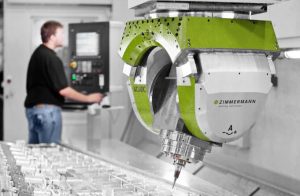Exploring CNC Machining Turning Parts: What’s Involved?
Introduction
CNC machining turning parts play a crucial role in various industries, offering precise and efficient solutions for manufacturing components. Understanding the process and factors involved in CNC machining turning parts is essential for achieving high-quality results. In this article, we’ll delve into the details of CNC machining turning parts and explore the intricacies of the process.

CNC Machining Turning Process
The CNC machining turning process involves the use of a lathe machine equipped with Computer Numerical Control (CNC) technology to remove material from a rotating workpiece. This process allows for the production of cylindrical parts with intricate features, such as grooves, threads, and contours. The cutting tool, controlled by CNC programming, precisely removes material from the workpiece to achieve the desired shape and dimensions.
Workpiece Materials
CNC machining turning parts can be manufactured from a wide range of materials, including metals, plastics, and composites. Common materials used for turning parts include aluminum, stainless steel, brass, copper, titanium, and various engineering plastics. Material selection depends on factors such as strength, corrosion resistance, thermal conductivity, and cost-effectiveness.
Tooling and Cutting Parameters
Tooling selection and cutting parameters play a critical role in the CNC machining turning process, affecting part quality, machining efficiency, and tool life. The choice of cutting tools, including inserts, tool holders, and tool geometries, depends on factors such as workpiece material, cutting forces, surface finish requirements, and desired machining operations. Cutting parameters, such as cutting speed, feed rate, and depth of cut, are optimized to achieve optimal machining performance while minimizing tool wear and material deformation.
Tolerances and Surface Finish
CNC machining turning parts can achieve tight tolerances and excellent surface finishes, meeting the most demanding specifications and requirements. Tolerances refer to the allowable deviation from the specified dimensions, while surface finish refers to the quality of the machined surface. CNC turning processes, coupled with high-precision CNC controls and cutting tools, can achieve tolerances as tight as a few microns and surface finishes ranging from rough to mirror-like.
Complex Geometries and Features
One of the advantages of CNC machining turning parts is the ability to produce complex geometries and features with high precision and repeatability. CNC lathes can machine a variety of shapes, including cylindrical, conical, and contoured surfaces, as well as features such as grooves, threads, knurls, and chamfers. This capability allows for the production of a wide range of components with diverse shapes and functionalities.
Cost Considerations
Cost considerations for CNC machining turning parts include factors such as material costs, machining time, tooling expenses, and setup costs. While CNC machining offers high precision and flexibility, it may involve higher initial investment costs compared to conventional machining methods. However, the efficiency, accuracy, and versatility of CNC turning processes often result in overall cost savings over the product lifecycle.
Conclusion
CNC machining turning parts involve a precise and efficient process for manufacturing cylindrical components with intricate features and tight tolerances. By understanding the CNC turning process, material selection, tooling, cutting parameters, tolerances, surface finish, and cost considerations, manufacturers can optimize their machining processes and produce high-quality parts tailored to specific requirements. Explore CNC machining turning parts to leverage advanced machining solutions for your manufacturing needs.